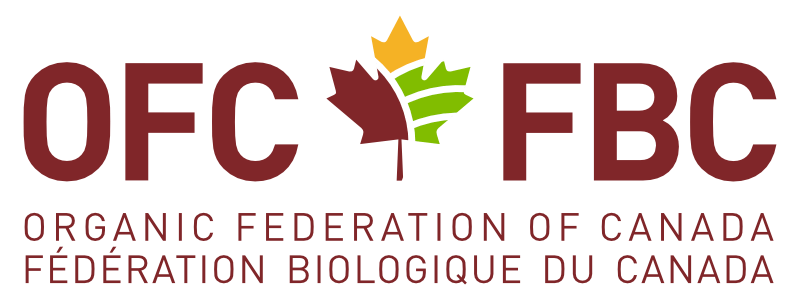Calculation of organic content – Aloe vera powder #
Can aloe vera juice or gel made from organic aloe vera powder and water be certified as organic for human consumption? How is the organic content calculated? (301.1)
Yes. A reconstituted aloe vera juice or gel product can be certified as organic. If the principal display panel (PDP) states that the aloe vera is “reconstituted from concentrate”, the organic content of the juice or gel should be calculated using the amount of single-strength aloe vera made from the concentrate. If the PDP does not mention the reconstitution of aloe vera, the organic content of the juice or gel should be calculated by subtracting the total volume of water from the final product. (9.1.3.b)
When organic aloe vera juice (reconstituted from 200X aloe vera powder and water) is used as an ingredient in a further food product, how is the organic content calculated for the secondary product? (301.2)
Water used to reconstitute the powder should be excluded from the organic content calculation. For example, if 200 L of aloe vera juice (reconstituted from powder at 200X strength) is used as an ingredient in a further juice product, only 10 grams of the original aloe vera powder would be included in the calculation of the secondary product. (9.1.3 c).
Organic percentage – liquid ingredients #
When liquid ingredients are composed of solids dissolved in added water, is the added water excluded or included in the percent organic calculation? (416) 24 March 2021
As per 9.1.3.b, it depends upon whether the addition of water is to reconstitute a concentrate to bring it to single-strength concentration and the final product makes a reconstitution claim either on the product label or on a specification sheet. If yes, then the added water to bring the ingredient or product to single-strength concentration is INCLUDED in the percent organic calculation. If no, and the water is declared in the finished product’s ingredient statement, then the added water is EXCLUDED in the percent organic calculation of that or any future product that uses it as an ingredient.
When calculating the organic percentage of a multi-ingredient product, that is a mixture of solid and liquid ingredients (9.1.3c), and there are no reconstitution claims, is the mass of each ingredient used as-is, or should any salt or water in each of these ingredients be removed prior to the calculation? (417) 24 March 2021
For such products the organic percentage calculation shall be made without including the water or salt that has been added by the current or prior processor and that is listed on the final product’s ingredient statement.
Non-organic aquaculture ingredient #
Can a non-organic aquaculture ingredient, such as DHA Algal Oil, be added to an organic product as a non-organic ingredient? (583, 584) October 13, 2023
No. Non-organic aquacultural ingredients are not indicated as permitted per 9.2.1 d) (95% organic content (or more)) and 9.2.2.a) (70-95% organic content).
Note – ‘Subject of a petition for the upcoming standards review.
Organic percentage for standardized alcohol #
An operator who produces a standardized alcohol (as per the Food and Drug Regulations) is not required to list ingredients on a product label (per CFIA alcohol labelling requirement). Under organic preparation requirements, does an operator who has used a previously processed complex ingredient to which water has been added (but not ‘reconstituted from concentrates’) need to exclude the water added to its multi-ingredient ingredient when calculating the total organic percentage (9.1.3.b) of the alcoholic beverage? (567) 19 December 2022
Yes. Regardless of the consumer labelling requirement exception for standardized alcohols, the water as indicated on the product specifications or Certificate of Analysis of the ingredient (if any, when not 100% pure) shall be excluded from the organic percentage calculation along with all water added during the preparation of the standardized alcoholic beverage.
Gas as ingredient #
Are gases (such as carbon dioxide for the carbonation of beverages) added as ingredients (under PSL table 6.3 or 6.4) required to be calculated as non-organic ingredients? (473) – 17 February 2020
No. Gases are not included. Only solids and liquids must be accounted for when calculating organic content (9.1.3 in 32.310).
Ingredients – Organic and non-organic #
Does the prohibition against using both the organic and non-organic form of an ingredient (9.2.1) apply to different varieties of grapes used in a wine or different flours (e.g.,, barley and wheat) used to bake a single bread? (173)
It depends. Under 9.2.1, ingredients that are recognized as having distinct qualities could be considered as separate ingredients, even when they fall into the same general category of ingredients such as “flour” or “grapes”. In the examples given, it would be possible to use one ingredient in its organic form and the other in its non-organic form without violating 9.2.1 provided the following restrictions are met.
For organic products with organic content equal to or >95%, the non-organic content must be less than 5% of the total and commercial unavailability must be confirmed annually for any non-organic agricultural ingredients. For products containing 70-95% organic content, commercial availability does not apply.
In both categories, the organic and the non-organic ingredients must be listed on the label to be compliant with labelling requirements in the SFCR and the guidelines from CFIA.
Status of components in a multi-component ingredient #
Per 9.2.1 and 9.2.2, organic products shall not contain an ingredient in both organic and non-organic form. A cookie contains organic sugar, plus a multi-component ingredient (such as chocolate chips) that contains non-organic sugar. Is using organic sugar as an ingredient and non-organic sugar as a sub-part of a multi-component ingredient (chocolate chips) prohibited by 9.2.1 or 9.2.2? (636) 25 February 2025
No. The single component ingredient (organic sugar) and the multi-component ingredient (chocolate chips) are different ingredients. In ingredients made up of sub-parts, the status of the sub-parts is not considered individually. It is therefore acceptable for a product to contain non-organic sugar as a sub-part of a non-organic ingredient, and organic sugar as a single ingredient.
Organic percentage of organic seed product #
Do seed coatings or treatments need to be considered when calculating the organic percentage of an organic seed product? (519) 1 November 2021
Seed coatings or treatments are not considered ingredients per the ”ingredient” definition of CAN/CGSB-32.310 3.36 and therefore should not be taken into account when calculating the percentage of organic ingredients in an organic product. Any coating or treatment must be listed in PSL Table 4.2, columns 1 & 2.
Meal replacement #
Is a “meal replacement” certifiable under the COR, given that it contains supplemental minerals and vitamins? (266)
Yes. Meal replacement products may be certified organic if produced in accordance with this Standard and if they meet the nutritional profile set out by Canadian regulation for “meal replacement” products.
Fortification of organic food #
Can juice formulated with vitamin C, vitamin D, or calcium be certified as organic? (328)
It depends.
The answer is yes, if the calcium compounds and vitamin C (ascorbic acid) are used as acidity regulators, stabilizers, or preservatives as outlined in the individual listings in Table 6.3.
The answer is no, if vitamin C, vitamin D, or calcium is added for nutritional fortification. Juice is categorized as a voluntary fortification option by the Canadian Food & Drug Regulations and the PSL (Table 6.4) states that ‘Vitamins and mineral nutrients’ “shall be used if legally required”. “Legally required” means that fortification is mandatory by government and that is not the case for juices.
Refer to CFIA’s Foods to Which Vitamins, Mineral Nutrients and Amino Acids May or Must be Added [D.03.002, FDR] and to the “Vitamins and Mineral Nutrients” listing in Table 6.4 for details.
Processing Aids #
Does the standard require that processing aids in the production of non-organic ingredients be listed on Table 6. 5 PSL? (20.1)
No. The processing aids used by manufacturers of non-organic ingredients are not subject to the scrutiny of Certification Bodies.

